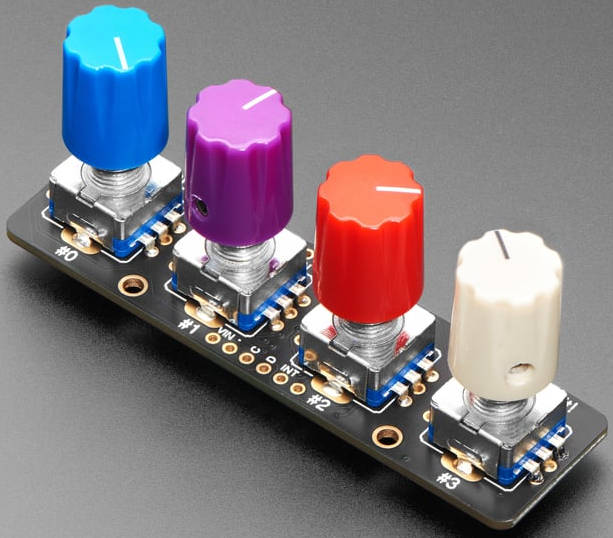
When Sabrina Hodak, 20, was growing up, she didn’t have any “queer Jewish representation.”
“Around the time that I realised I was bisexual, I was involved in a Jewish youth group and all the religious mentors I had gotten to know, who had helped on my religious journey, were cisgender and heretosexual,” she tells Mashable. “And so it was very difficult to have conversations with them about the relationship between queerness and Judaism, because a lot of what they would say was: ‘it doesn’t make sense’. Like, you can’t be queer and religious.”
The latter sentiment can be pervasive in religious communities, complicating the relationship with faith that a lot of LGBTQ people have. The notion that sexual identity and religious identity cannot coexist can be isolating, especially at a young age.
The overlap between religion and queerness
There is a significant space shared between those who are religious and those who belong to the LGBTQ community. In a 2022 study by The Trevor Project(opens in a new tab), for example, one in five LGBTQ youth surveyed said their religion or spirituality is important or very important to them. In the U.S., 38.5 percent of LGBTQ adults ages 18 to 24 identify as religious to some degree, according to a 2020 report from the UCLA School of Law Williams Institute(opens in a new tab). While middle-aged and older people are more likely to be religious, these numbers are still significant.
LGBTQ spaces are needed now more than ever. Here’s what people mapping them have to say.
But despite many in the LGBTQ community believing in some form of religion or God, there is a dearth of resources and support for individuals. For those also part of a faith-based community, there is the prospect of both internal and external conflict. A 2016 study on religious conflict, sexual identity, and suicidal behaviors(opens in a new tab) said that LGBTQ young adults “who mature in a religious community” report experiences of discriminations, internalized homophobia, negative beliefs towards same-sex attraction, and feelings of discontent. Consequently, many “experience conflict” when it comes to their religious identity.
Hodak, who grew up in Florida within the Jewish community, says that she had “extremely exhausting” experiences with religious mentors after she shared her sexual identity. She turned to online communities for support, also discovering Beloved Arise(opens in a new tab), a national organization dedicated to supporting queer youth of faith, for which she is now a youth ambassador. The movement and multi-faith community was founded in 2020 by entrepreneur Jun Love Young, who first came out at the age of 45 and was told he could “no longer be Christian.”

Beloved Arise founder Jun Love Young
Credit: Beloved Arise.
“I came out of the closet finally, and decided that I was no longer going to allow my religion and my religious beliefs to keep me from being myself,” Young tells Mashable. “When I first did that, I felt such opposition from my faith communities. I was told being being gay had no place in the Kingdom of God.”
“I was no longer going to allow my religion and my religious beliefs to keep me from being myself.”
Young’s story resulted in people reaching out to him with their own stories, both within his religious community and his home city of Seattle. Many of them were teenagers, struggling with their seemingly dual identities.
“It’s one thing for adults to go through something like that, but for teens and young adults to go through this, that broke my heart,” he says.
21 things to know about coming out at college
This idea spurred the formation of Beloved Arise, “a safer place for young people to navigate their queer identity during such a formative time in their life,” as Young puts it. When it first started, the organization helped Christian LGBTQ youth, but after two years it expanded to include people of other faiths, including Muslims, Hindus, and Sikhs. Many religious leaders, such as bishops, have also lent support over the years through donations, sponsorship, and volunteering.
“It’s the organisation I wish I had when I was a teen, so that I might not have waited until 45 to come out,” he says.
Finding affirmation in faith
For queer youth of faith, support is vital – and can be life-changing. In a 2018 study by the Human Rights Campaign Foundation(opens in a new tab), 70 percent of surveyed LGBTQ teenagers reported feelings of hopelessness and worthlessness; a whopping 95 percent confessed they find it hard to sleep at night. Within spaces and families, negative sentiments towards LGBTQ people cause adverse effects. Only five percent of respondents said their teachers are supportive of queer people, and just 26 percent reported feeling safe in their school classrooms.
In religious communities, discrimination and conflicting mentalities have similar consequences. Over 30 percent of LGBTQ people of faith in the UK say they aren’t open about their sexuality with their faith community(opens in a new tab), according to research conducted by Stonewall in 2018. One in four trans people surveyed said the same. Reasons can include fear of judgement and lack of support. Research from the Family Journal(opens in a new tab), conducted in 2016, found that LGBTQ youth view faith “as a barrier to a positive relationship with their parents” and believe they are “not welcome in their places of worship.” Many participants in the study said religion held “a negative impact” in their “coming out process.”
Young says that many children, especially within Christianity, are taught of unconditional love from God, but where sexual identity is concerned, this messaging can be fraught.
“What happens is when a young person realises that they’re not the same, that they might be different and that they might be queer, it becomes this space of cognitive dissonance,” he says. “That creates a lot of tension in an adolescent brain. The struggle is: how do I stay connected to my family and home, when my home doesn’t want me here as my real self? There’s this additional burden of ‘my existence, might lead to my rejection’.”

Sabrina Hodak
Credit: Beloved Arise

Sid High
Credit: Beloved Arise
Growing up in the Midwest, Ceaje, 18, said they “didn’t feel safe” at school, facing misconceptions about both their identity, as both Native American and a trans person. Their solace, they explain to Mashable, was found in Lakota traditions and thinking. In an essay for Beloved Arise, Ceaje writes(opens in a new tab), “My spirituality is as much of who I am as my sexual and gender identity is.”
“My spirituality has been there through all the awkward conversations that have left me feeling dejected and ostracized, my ancestors have sat beside me through all the nights I spent screaming about wanting to be accepted, and the spirits have forgiven me for trying to change and hide myself from others,” the essay continued.
“My spirituality is as much of who I am as my sexual and gender identity is.”
For those like Ceaje, faith can provide both refuge and hope. Sid High, an 18-year-old trans Christian from Iowa, says he was judged by members of his previous church when he first came out, and was given “anti-LGBTQ verses” by one. High turned to scripture and religious education, where he found the underlying message of “love, over and over again”.
“As a trans man of faith, it is not easy to be able to walk into a church and feel welcome without fear of judgement. [But] instead of running away from the Lord, I dove deeper into scripture,” he says. “When I came out, I came into a deeper connection with God, for my faith saved my life. I came to the conclusion that God is love and he calls us to love regardless of how we love.”
5 ways parents can talk to kids about LGBTQ+ identities
Hodak, too, found knowledge and strength in her faith. “A lot of what Judaism brought to me is awareness, in all the things that I do and say. It’s [taught me] to be be very mindful and growth oriented,” she says.
She’s also realized, through research and her own activism, how religiosity can be different for each person.
“The best thing that you can do is stand your ground and understand that no one has the power to tell you that you can’t be who you are. No one has the power to say you don’t have a space in religious communities because that is not true. You get to determine what is meaningful to you, and how you express your queerness and religiosity.”
This relationship between faith and queerness has resulted, for the likes of Ceaje, Hodak, and High, in a stronger relationship with identity as a whole. Although each grappled with their space in their religious community, a greater and evolving understanding of faith has been reconciliatory. As High puts it, his faith “includes the LGBTQ community”, regardless of judgement from others within religious spaces. He quotes Matthew 5-7: “Judge not, lest ye be Judged.”
Fostering an inclusive future
The existence of organizations like Beloved Arise are a part of a larger movement to activate respect and inclusion for LGBTQ members of faith communities. Other groups, like the Queer Hindu Alliance(opens in a new tab), The Reformation Project(opens in a new tab), Jewish Queer Joy(opens in a new tab), the Rainbodhi LGBTQIA+ Buddhist Community(opens in a new tab), and Muslim for Progressive Values(opens in a new tab), have similar goals and offer different forms of support to members.
Hodak, who also works alongside Jewish Queer Joy, says that beyond acceptance, LGBTQ people of faith are looking for safety — and to feel genuinely welcome.
“People need to also realise that we’re the same as them. The only real difference is that we’re queer. Religious people need to see us as the same,” she says. “We want to be able to share the same religious spaces, we don’t want to take them over. We don’t have any agenda to change religion to our whim. We just want to feel safe, and be able to pray to whomever God we choose and to be able to share those spaces.”
“We want to be able to share the same religious spaces, we don’t want to take them over… We just want to feel safe.”
Young, who says his faith means “everything” to him, believes that LGBTQ inclusion into religious spaces is paramount. Although religious institutions and leaders have shown progress and growing acceptance, as Young believes, America is still in need of a shift. It is also now a country where belief in God is facing a significant dip(opens in a new tab).
“The good news is that there are more and more places of faith that are opening their doors and welcoming and affirming LGBTQ people. But I think faith is in trouble,” Young explains. “Religious institutions are in trouble, because [when it comes to the] younger generation, they just don’t see relevance in practicing these religions, especially those that are anti-queer.”
He cites younger, queer people of faith who hold onto their religions as those “saving” such institutions.
“They’re the ones who are saving religion in America. How ironic is that? But that’s what inspires me,” he says. “I see these people as the future of religion in the United States.”
If you want to talk to someone, the TrevorLifeline provides free, confidential counselling for LGBTQ people. To reach a counsellor, call 1-866-488-7386 or text START to 678678. If you’re in the UK, here is a list of LGBTQ mental health helplines(opens in a new tab). Here is a list(opens in a new tab) of international resources.
If you’re feeling suicidal or experiencing a mental health crisis, please talk to somebody. You can reach the 988 Suicide and Crisis Lifeline at 988; the Trans Lifeline at 877-565-8860; or the Trevor Project at 866-488-7386. Text “START” to Crisis Text Line at 741-741. Contact the NAMI HelpLine at 1-800-950-NAMI, Monday through Friday from 10:00 a.m. – 10:00 p.m. ET, or email [email protected](opens in a new tab). If you don’t like the phone, consider using the 988 Suicide and Crisis Lifeline Chat at crisischat.org(opens in a new tab). Here is a list of international resources(opens in a new tab).






